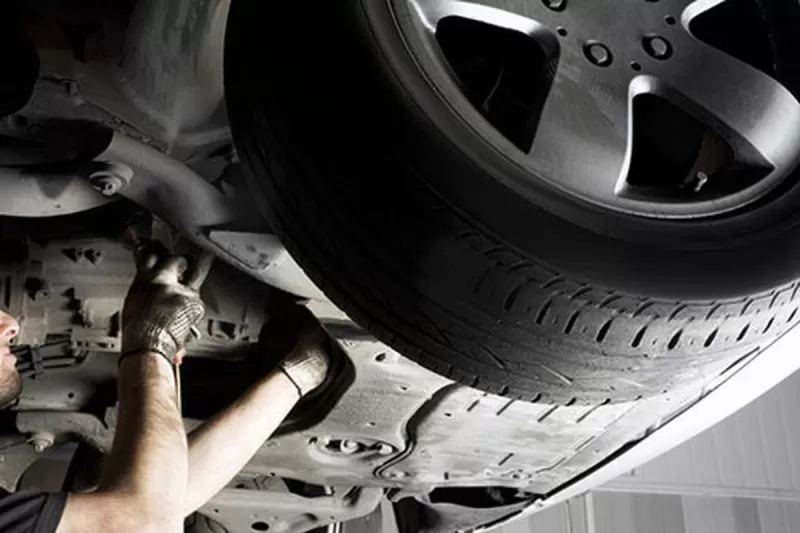
Table of Contents
- The Importance of a Properly Maintained Vehicle Suspension
- Common Suspension Problems
- Signs Your Struts May Be Worn Out
- Benefits of Timely Strut Replacement
- How to Choose the Right Struts for Your Vehicle
The Importance of a Properly Maintained Vehicle Suspension
Your vehicle’s suspension system ensures a smooth and comfortable ride. This system, which includes the struts, shocks, and other components, helps maintain tire contact with the road, provide stability, and absorb the impacts from road irregularities. Ensuring your vehicle suspension operates correctly is essential for both safety and comfort.
A well-maintained system ensures better handling and braking, enhancing road safety. According to experts in vehicle suspension North Vancouver, neglecting this system can lead to issues such as uneven tire wear, decreased fuel efficiency, and an uncomfortable ride. By ensuring that each suspension component works optimally, you can drive with peace of mind, knowing that your vehicle will respond predictably to steering and road conditions.
Common Suspension Problems
Understanding common suspension problems can help in diagnosing issues early on. Some of the most frequent issues include:
- Worn-out struts and shocks: These can lead to a bumpy ride and less effective contact between your tires and the road. This, in turn, affects vehicle stability and handling.
- Leaking fluid from hydraulic components: Hydraulic fluid leaks can signal a failure in the shocks or struts, leading to reduced performance and, eventually, total component failure.
- Uneven tire wear: Suspension problems can cause improper alignment and uneven tire wear. This not only shortens tire life but can also affect handling and fuel efficiency.
- Noisy steering and suspension components: Clunking or creaking sounds can indicate worn or damaged suspension parts, which may require timely repairs or replacements.
Recognizing and addressing these problems early can save you from more expensive repairs and ensure that your vehicle remains safe to drive. An improperly functioning suspension system can lead to other mechanical issues that can significantly impact your vehicle’s performance and overall safety.
Signs Your Struts May Be Worn Out
Recognizing the signs of worn struts can prevent further damage and ensure timely replacements. Look out for:
- Excessive bouncing after hitting a bump: If your vehicle continues to bounce several times after hitting a bump or pothole, the struts are no longer effective in damping the suspension movement.
- Unusual noises when driving over rough surfaces: Clunking, knocking, or squeaking noises from your suspension can indicate that the struts or other components are worn out.
- Visible leaks from the struts: Struts contain hydraulic fluid, and seeing drips or smudges on or near the struts suggests a leak. Leaking fluid reduces the strut’s ability to absorb shocks.
- Difficulty steering or a feeling of “floating” at higher speeds: Worn struts can cause a disconnected feeling from the road, making it challenging to steer accurately and maintain control, especially at higher speeds.
If you notice any of these signs, it is likely time to inspect your struts for potential replacement. Promptly addressing these symptoms can preserve other vehicle components and maintain your car’s overall performance and safety on the road.
Benefits of Timely Strut Replacement
Replacing worn struts on time can offer multiple benefits, including:
- Improved vehicle handling and stability: New struts ensure better road contact for your tires, providing a safer and more controlled driving experience.
- Enhanced ride comfort: Proper struts absorb road imperfections effectively, offering a smoother and more comfortable ride.
- Extended lifespan of tires and other suspension components: Good struts prevent excessive wear on tires and reduce stress on other suspension parts, which can extend their service life.
- Reduced wear and tear on other automotive parts: Maintaining the suspension system can prevent additional strain on components such as the control arms and steering linkage, ultimately reducing overall vehicle maintenance costs.
Addressing suspension issues early can prevent more costly repairs in the future. Regular maintenance not only ensures a comfortable ride but also plays a crucial role in your vehicle’s overall longevity and safety.
How to Choose the Right Struts for Your Vehicle
Choosing the right struts involves considering various factors such as vehicle type, driving conditions, and personal preferences. Performance struts may be ideal for those seeking enhanced handling and sporty driving characteristics, while standard struts are suitable for regular commuting and day-to-day driving. Consider the following tips when selecting struts:
- Consult your vehicle’s manual: It contains specifications for compatible struts that match your vehicle’s design and performance requirements.
- Consider your driving conditions: If you frequently drive on rough or uneven roads, you may benefit from heavy-duty or performance struts tailored for such conditions.
- Seek professional advice: Mechanics and automotive specialists can provide valuable insight based on your driving habits, vehicle use, and needs, ensuring you make an informed decision.
By considering these factors, you can select struts that enhance your vehicle’s performance, ensuring a safe and comfortable driving experience tailored to your specific needs.